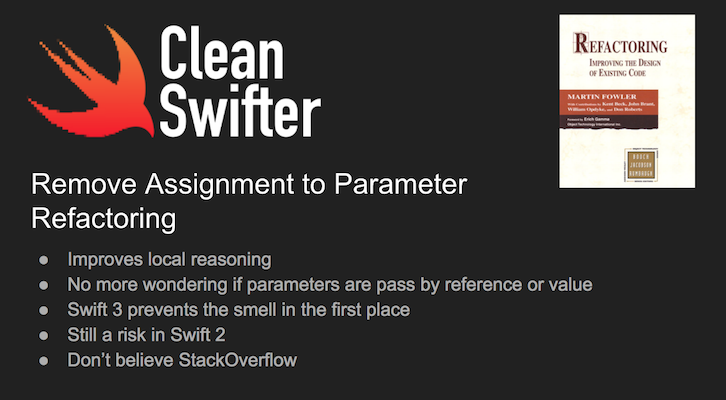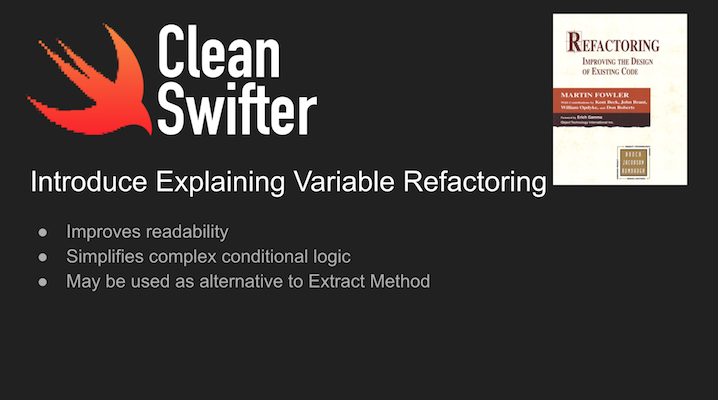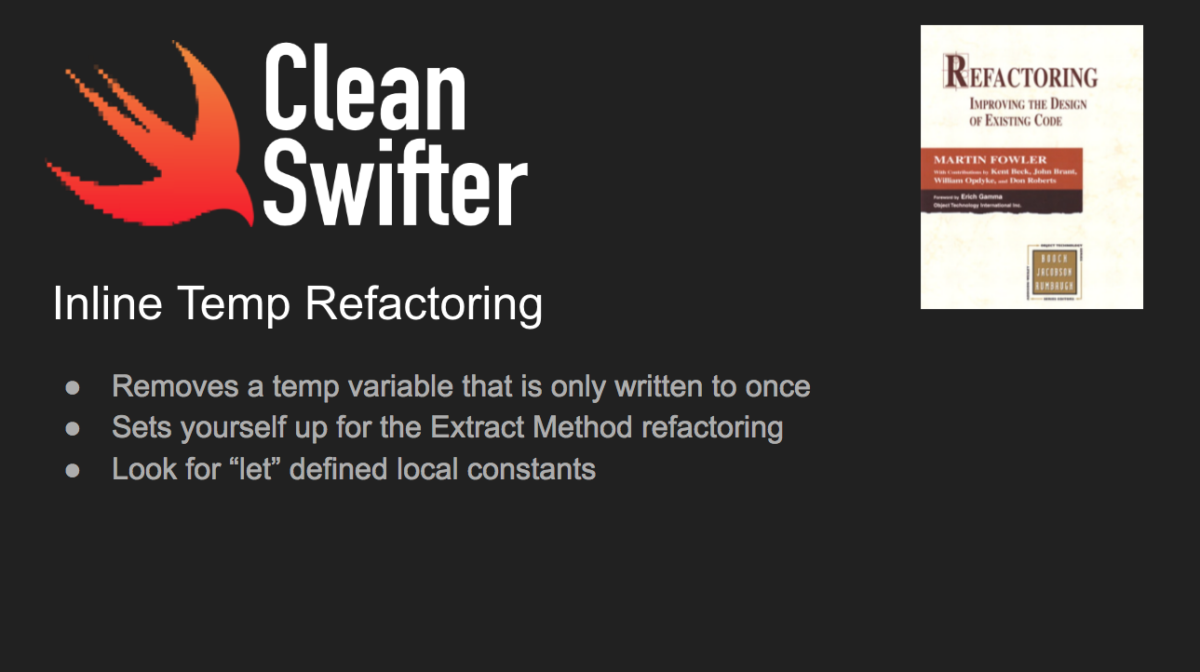In “Refactoring, Improving the Design of Existing Code” by Martin Fowler, he presents the Inline Method refactoring. It is the opposite of Extract Method, which I’ve already covered.
Here’s a video walkthrough of the Inline Method refactoring in Swift and its benefits:
Video Transcription
Hey, what’s up everybody, it’s Andy from cleanswifter.com, and I’m back here to talk about another refactoring in my video series covering Martin Fowler’s book, Refactoring, Improving the Design of Existing Code. This week we’re going to talk about Inline Method and it’s a refactoring which is actually the exact opposite of the refactoring we talked about last time, Extract Method. With Extract Method, it was all about taking common functionality from a larger piece of code and extracting it into a new method. With Inline Method, it’s doing the exact opposite. You’re going to take code in a method and delete that method, and move the functionality back to where’s it’s called from.
Why Inline Method Is Useful
This is useful for a couple reasons. In one case, if the code being called is so simplistic that putting it in another method just distracts you, you might as well just put it back in the original place and delete the simple method.
Another reason you may want to do it, is that, if you have a series of different methods that are all called from a bigger method, and those other methods being called are smaller, you can then move that functionality back to the original method, delete all those other smaller methods, and then once the functionality is back together in the calling method, then extract that as one method, that then serves a better purpose in being a cohesive unit of code that actually does something.
We’re not going to do that right now. First we’re going to look at inline method all by itself. Let’s take a look at an example.
The Example
Here we have some code that calculates the length of a hypotenuse according to the Pythagorean Theorem. This code right here adds the squares of two numbers, the base and height of a right triangle, then takes the square root of the result. That’s the length of the hypotenuse of the right triangle. Reading this line of code by itself is pretty decent. I can read this and understand what it’s doing. But then I look at all these methods being called, and all of these are just doing a single line of code, which is just built in math. I want to propose an Inline Method refactoring to delete all three of these methods and move this functionality to be directly included with this method. Let’s do this one by one.
Starting in the middle we have the numbers being squared. That’s going to be my target method to first delete. I can see that this is just multiplying two numbers together, simple enough. I can come down here and square the numbers directly, and now since square is no longer being called, I’ll delete that. Voilah, that is the Inline Method refactoring.
I’m going to do this again for add. I can then delete add, and the call to it, and instead, just put that functionality directly in this line. Now you can see that I’m adding the result of the methods being squared. Add is no longer called, so delete that custom method. And the same square root, which just wraps the Foundation function for doing the same thing, I can then delete this and instead call the Foundation function directly. You can see the refactored result.
This example is kind of simplistic, but I think the simplisticness of it is a good example of when you would want to do this refactoring. In each of these cases and methods that I deleted, there was one line of code that called a function right from Foundation: add, multiply, and square root. When looking at this code, I think it’s much more obvious what it does, and there’s not these extraneous methods that cause my eyes to jump around. Now, imagine you’re doing this in a class, or series of classes, where those methods being called actually existed in a different place. Now, not only do you need to look somewhere else, but where you have to look is in a totally different file. For me, that jumping around, especially when the method is so simple, I think it’s better served to have it right inline with the code that is performing the function.
Again, it’s just a tool to add to your toolbox. Inline Method appears in Martin Fowler’s book, Refactoring, Improving the Design of Existing Code. You can buy it in the description for this video. Again, check out the original post on my blog, cleanswifter.com. Thanks a lot for watching, and I’ll see you next time.










